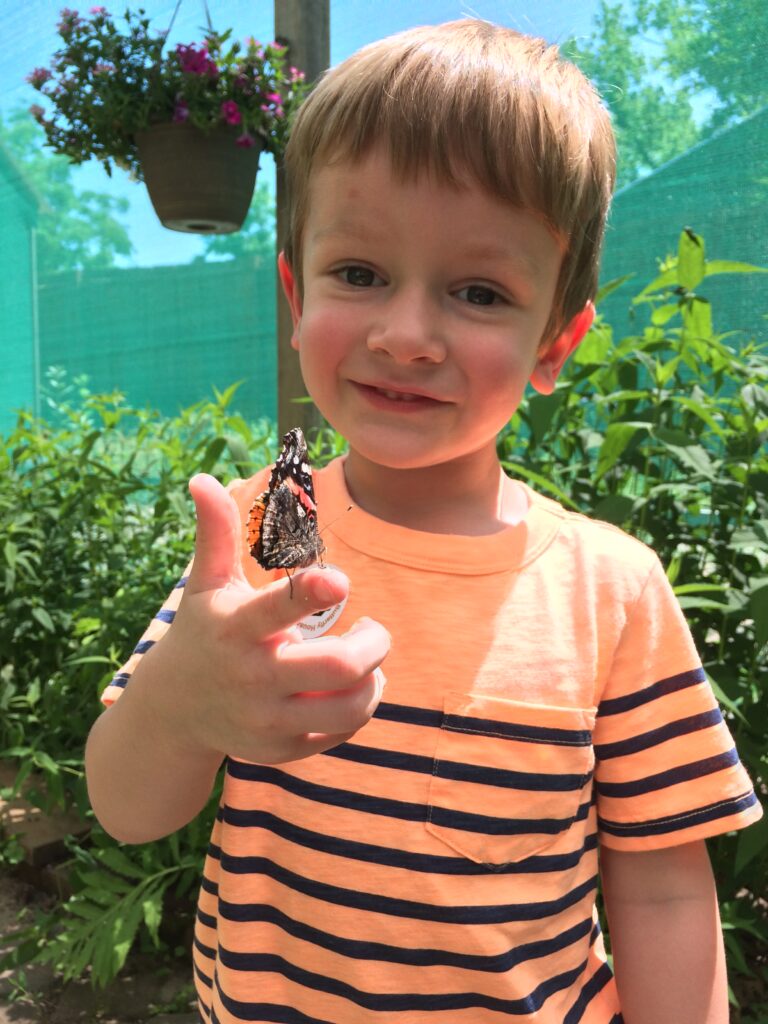Now open for the 2025 Season!
Enjoy witnessing all stages of the butterfly lifecycle. Learn what each butterfly species prefers for nectar and host plants, while choosing plants of your own to attract butterflies in your own garden. Bring the whole family to experience the Butterfly Atrium and talk to our expert staff for insights about pollinators and planting. Free Admission.


Pollination is the process of moving pollen from one flower to another of the same species, which produces fertile seeds. Almost all flowering plants need to be pollinated. Some plants are pollinated by wind or water, and some are even self-pollinating. Pollinators are vital to maintaining healthy ecosystems. They are essential for plant reproduction and produce genetic diversity, allowing for plants to adapt to changes in their environment.
When a butterfly lands on a flower to drink nectar, the flower's pollen becomes attached and as the butterfly moves from flower to flower drinking more nectar, the pollen is transferred. Once the pollen from one flower is brushed off onto another flower, it is caught on the female part of the flower, called the pistil.
Pollinators are “best” adapted to local, native plants, which often need less water than ornamentals. Plant big patches of each plant species for better foraging efficiency. Flowers should bloom in your garden throughout the growing season. Plant willow, violet, and mayapple for spring and aster, joe-pye weed, and goldenrod for fall flowers. Butterflies favor platform-shaped sunflower and aster but will feed on a diversity of nectar-rich flowers from violet to serviceberry. They prefer red, purple, or yellow flowers with sweet scents.
PHONE
(215) 794-7043
FAX
(215) 794-8020
PHYSICAL / SHIPPING ADDRESS
5074 YORK ROAD
HOLICONG, PA 18928
(1 mile south of Peddler’s Village)
MAILING ADDRESS
PO BOX 577
HOLICONG, PA 18928
Join with our subscribers receive regular updates on events, specials and what’s growing at Bountiful Acres!